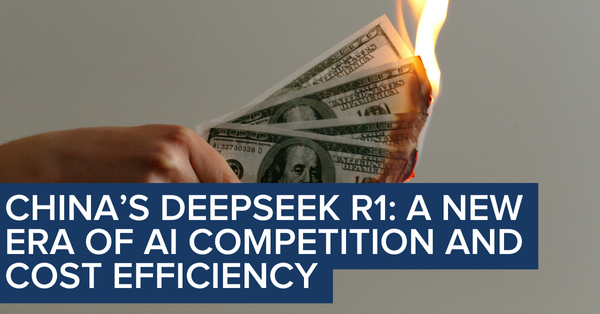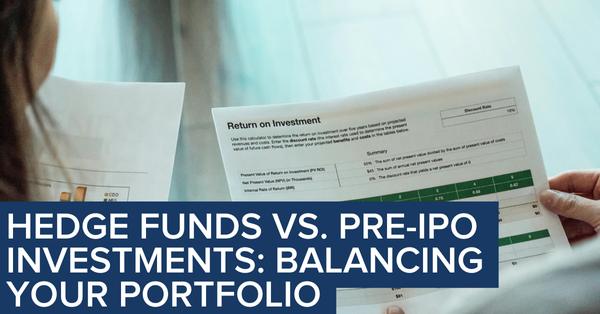2023 Big Bank Forecasts Summarized

Are you wondering what the world’s largest and most well-known banks are projecting for markets in 2023?
Great, we’ve summarized their outlooks below.
Executive Summary
Following a banner year in 2021 for investments, 2022 proved to be much more challenging. For the first time in decades, Wall Street strategists, are predicting a down year for stocks in 2023. Likely because 2022 presented such a challenging investment environment.
Source
While no one can know where the S&P 500 will close on December 29, 2023, some of the commentary and projections by these well-followed market strategists could help inform your approach to investing this year.
We explore end-of-year targets and highlight some key market commentary below. Note this is not an all-inclusive list of projections from every large financial institution, and some individual employees and divisions within a financial institution may issue their own projections.
A sampling of S&P 500 2023 year-end Price Targets
- Deutsche Bank Securities: 4,500
- Oppenheimer: 4,400
- BMO Capital Markets: 4,300
- JPMorgan: 4,200
- Jefferies: 4,200
- Wells Fargo: 4,200
- Evercore ISI: 4,150
- Cantor Fitzgerald: 4,100
- BofA: 4,000
- RBC Capital Markets: 4,000
- Goldman Sachs: 4,000
- Morgan Stanley: 3,900
- UBS: 3,900
- 2022 S&P 500 Closing Price: 3839.50
- BNP Paribas: 3,400
(Source)
Considering that the S&P 500 closed at 3839.50 on 12/30/22, the sampling of forecasts above doesn’t paint an extremely bullish picture with many of the projections showing gains of just 9% from the prior year's close.
Indeed, a 4,000 price target is only about 4% from the 2022 close and even the most bullish projection of $4,500 has the market up 17% on the year. The lowest forecast of $3,400 would see the markets decline right around 12%.
Distilling the 2023 Views from these Reports
Overall, investors seem nervous following a painful 2022. These forecasts share a common thread of uncertainty given the violent moves of the prior year. There remains significant uncertainty around the path of inflation in developed economies like the US. Even more confusing is determining the reaction function for central banks like the Federal reserve.
Common themes that were regularly mentioned included: the importance of China’s reopening and fiscal impulse, how the Eurozone handles energy shocks, and whether developing economies that hiked early can successfully move past inflationary pressures.
Individual Bank Outlook Highlights
Goldman Sachs
Goldman is one of the few firms with a forecast that the US avoid recession entirely, expecting that “the US should narrowly avoid recession as core PCE inflation slows from 5% now to 3% in late 2023 with a ½ pp rise in the unemployment rate.”
Goldman does see global headwinds: “We expect global growth of just 1.8% in 2023, as US resilience contrasts with a European recession and a bumpy reopening in China.”
“With a resilient labor market and still elevated inflation, we don’t see any rate cuts in 2023 unless the economy enters recession after all. In our no-recession forecast, the Fed only implements a first gentle 25bp cut in 2024Q2. This baseline of ‘high rates for longer’ would again illustrate how different this cycle is as the first Fed cut in the median hiking cycle has historically come roughly six months after the last hike.”
Goldman noted the following as well:
- Pockets of resilience for countries that raised interest rates “hiked” early (e.g., Brazil).
- Progress on US inflation has been promising but it’s not certain to be tamed
Morgan Stanley
“The turbulence of 2022 now weighs heavily on our investment outlook for 2023…” Yet Morgan Stanley expects a resilient economy, driven by a “robust labor market.” They expect asset prices to be primarily impacted by the actions of the Federal Reserve in response to inflation readings throughout the year.
“The economy is proving too resilient, causing the ‘looming collapse’ in earnings to remain elusive for yet another quarter. I expect earnings to drip down slowly, frustrating market bears.”
“We believe slowing growth rates combined with premium valuations will allow the S&P equal weighted to continue to outperform the S&P 500 cap-weighted…We are reducing our exposure to these mega-cap stocks for these reasons.”
J.P. Morgan
Read J.P. Morgan’s Outlook
“Our core scenario sees developed economies falling into a mild recession in 2023.”
J.P. Morgan encourages investors to look beyond developed markets, and sees attractive value in emerging markets:
Upsides catalysts in 2023:
- Fed Pause
- End of zero-Covid policy in China
- Calming political risks (e.g., ending of hostilities in Ukraine)
Deutsche Bank
“Policymakers, at least in the U.S. and Europe, now appear resigned to weaker economic growth in 2023. Any recessions are likely to be shortlived, but they will not be painless. The combination of lower growth, lingering inflation and public spending constraints will be difficult for both people and governments. Social inequality will be a topic of immediate and growing importance.”
“Slower economic growth in 2023 will not necessarily translate into weaker financial markets, however. In fact, markets could prove more resilient in the coming year than they have been in 2022.”
“More stable bond markets should, in turn, help lower equity market volatility. 2023 is likely to be an acceptable year for equities, but not a great one. Positive returns will be driven by some modest price/earnings expansion and dividends – but earnings per share will be stagnant. In this calmer environment, relative regional valuations may become more important.”
“For the full year 2023, we believe that nominal company profits will match their prior-year levels and will not fall as they did in previous recessions. The basis for this assumption is the nominal growth of gross domestic product – the development of economic output without adjustment for inflation. For the full year, increases of 5% in the U.S. and as much as 6-7% in Europe are considered possible.”
Deutsche highlighted the attractiveness of some developing markets given their discounts to historical “reasonable valuations.”
“Overall, the world’s main central banks are therefore likely to keep their monetary policy relatively tight initially. Current capital market pricing reflects this. But there remains a risk that inflation will go higher than expected, requiring central banks to intervene more strongly.”
Alternatives were a large theme in Deutsche’s outlook with a view that active management of private assets has the opportunity to outperform passive allocations.
BNP Paribas
The note starts with a decidedly bearish tone:
“The global economy is on the brink of recession as policy rates shoot higher, Europe faces an energy shock, and China struggles with zero-Covid policies and fragile property markets.”
“Equities face a struggle to generate above-average returns, even as the disconnect between still relatively optimistic corporate earnings expectations and economic reality narrows. We are neutral, with deep caution in Europe offset by optimism for US growth stocks.”
“One open question is whether wage inflation can be reduced without a large increase in unemployment.”
“Europe is facing an energy shock, unlike anything the region has seen since the OPEC price increases in the 1970s.”
“Inflation is in double digits in some countries, consumer sentiment has collapsed, and demand is weakening along with disposable income. Nonetheless, we believe headline inflation has peaked and will return to the ECB’s 2% target in 2024.”
“A key distinction between China and the US and Europe is the scope the government has to stimulate the economy, through either fiscal or monetary measures. While core inflation is at over 4% in the eurozone and over 6% in the US, in China, it is at just 0.4%”
Conclusion
Considering that 2022 proved to be such a challenging year to forecast and navigate, financial institutions are naturally conservative in their projections for 2023. As key catalysts unwind and resolve, like China’s reopening, markets should find relief in the resolution of uncertainty as many of these reports highlight.
A consistent tone across these reports was the need to diversify portfolios across both asset classes and geographies, entrenching the view that “true” diversification was key to navigating the unknown.
We wish you good health and good luck investing in the New Year!
View other Reports
You can read reports from other firms* using the links below:
Goldman Sachs https://lnkd.in/eKzF_2K4
J.P. Morgan https://lnkd.in/eHb6-622
Morgan Stanley https://lnkd.in/e2nAMjmM
Bank of America https://lnkd.in/e8XFD8TW
BlackRock https://lnkd.in/eYxCBRGj
HSBC https://lnkd.in/eNfBiJvH
Barclays https://lnkd.in/eRT4dsFY.
NatWest https://lnkd.in/euftbUw6
Citi https://lnkd.in/eXwA-Y4X
UBS https://lnkd.in/exudCU6V
Credit Suisse https://lnkd.in/e4CEK5NZ
BNP Paribas https://lnkd.in/ec4hWEdm
Deutsche Bank https://lnkd.in/eAWCSV_7
ING https://lnkd.in/eNpdmVH8
Apollo Global Management, Inc. https://lnkd.in/ewwq_62M
Wells Fargo https://lnkd.in/euMkQnKE
BNY Mellon https://lnkd.in/ezMfVgND
Fidelity International https://lnkd.in/eJwK6tVx
Lazard https://lnkd.in/eku-xhqp
*This list of 2023 Outlooks is not inclusive of all reports published on the topic. The selected reports within this article were chosen randomly and do not reflect or provide all possible opinions.
Disclaimer:
Disclaimer
The information contained in this article is not investment advice; and does not constitute a recommendation to buy or sell any securities. The information within this article is meant for informational purposes only. Any statement in this document does not mean that the firm nor its employees agrees, endorses or approves any content of the document.
This article is only for knowledge sharing and does not constitute any investment advice. Anyone who makes an investment decision based on this article does so at their own risk. Any fund investment should be made through a formal confidential private placement memorandum and other fund documents. Potential investors should carefully read the risk factors in the private placement memorandum of securities issuance, and consult their own professional consultants if necessary, and receive advice on any investment, legal, tax or accounting issues. Past performance is not indicative of future performance, and the investment may potentially result in a loss of principal. The source and data of the material are considered to be reliable. However, there is no guarantee of its accuracy or completeness. The Company has no obligation to disclose or revise or modify this statement or any forward-looking statements as the circumstances change or as a result of subsequent events. Private equity funds are only suitable for specific qualified investors to subscribe. United States sales of the fund interests are exempt under Regulation D of the U.S. Securities Act of 1933, and are only applicable to potential investors who are eligible as "Qualified Investors" under Regulation D. Sales outside the United States are exempt under Regulation S of the U.S. Securities Act of 1933. Private equity funds are sold through Upmarket Securities LLC. Upmarket Securities LLC is a U.S. registered broker-dealer, and member of FINRA.
About UpMarket
UpMarket's mission is to unlock the private markets for individual investors.
We provide access to a range of asset classes and investment strategies that span private equity, hedge funds, crypto, real estate, and other alternative assets.
The problem
- A large barrier to entry due to high investment minimums
- Time-intensive because sourcing deals is a lot of work even if you’ve got a great network, and
- Costly because of investment-related diligence costs, paperwork, and legal fees
The solution
- Offering lower investment minimums
- Sourcing and conducting diligence on opportunities for investors, empowering them to pick and choose from pre-screened opportunities
- Making the investment process entirely digital, straightforward, and easy to manage from a single portal










